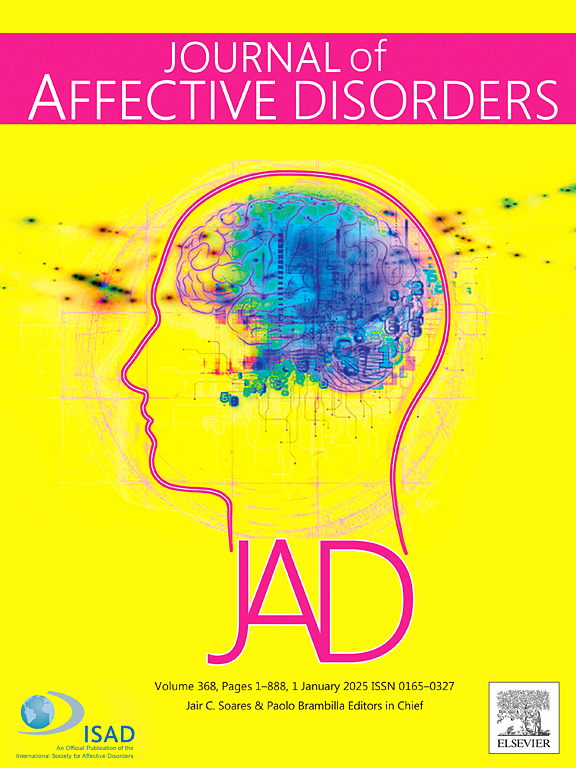Neurobiological differences in early-onset obsessive-compulsive disorder: A study of the glutamatergic system based on functional magnetic resonance spectroscopy
IF 4.9
2区 医学
Q1 CLINICAL NEUROLOGY
引用次数: 0
Abstract
In this study, the combination of functional state magnetic resonance spectroscopy (fMRS) and cognitive tasks was used to conduct subgroup analyses on early-onset OCD (EO) and non-early-onset OCD (non-EO) and explore differences in the glutamatergic system and cognitive function among OCD subtypes. A total of 70 OCD and 30 healthy controls (HCs) underwent clinical evaluation and were subsequently divided into the EO or non-EO groups. Next, both resting and functional state MRS data were collected, with the anterior cingulate cortex (ACC) serving as the region of interest. Quantitative analysis of MRS data yielded precise neurometabolic concentrations, which were then statistically analyzed alongside inhibitory function, as measured by the Go-nogo task. The final analysis included 92 participants (22 EO-OCD, 41 non-EO OCD, and 29 HCs). EO-OCD patients had significantly higher Glx levels (p = 0.044) and lower GSH levels (p = 0.009) in the functional state compared to the non-EO group. Moreover, in the EO group, correlation analysis revealed a positive correlation between the functional state Glx levels and the average response time for errors in the nogo task (r = 0.526, p = 0.014). Additionally, resting-state GSH levels were positively correlated with total Y-BOCS scores (r = 0.854, p < 0.001). Overall, early-onset OCD may represent a distinct subtype that requires targeted interventions, as evidenced by the imbalance in the glutamatergic system observed in early-onset OCD patients. Additionally, in early-onset patients, Glx concentration during activation was related to cognitive impairment.
求助全文
约1分钟内获得全文
求助全文
来源期刊

Journal of affective disorders
医学-精神病学
CiteScore
10.90
自引率
6.10%
发文量
1319
审稿时长
9.3 weeks
期刊介绍:
The Journal of Affective Disorders publishes papers concerned with affective disorders in the widest sense: depression, mania, mood spectrum, emotions and personality, anxiety and stress. It is interdisciplinary and aims to bring together different approaches for a diverse readership. Top quality papers will be accepted dealing with any aspect of affective disorders, including neuroimaging, cognitive neurosciences, genetics, molecular biology, experimental and clinical neurosciences, pharmacology, neuroimmunoendocrinology, intervention and treatment trials.
 求助内容:
求助内容: 应助结果提醒方式:
应助结果提醒方式:


